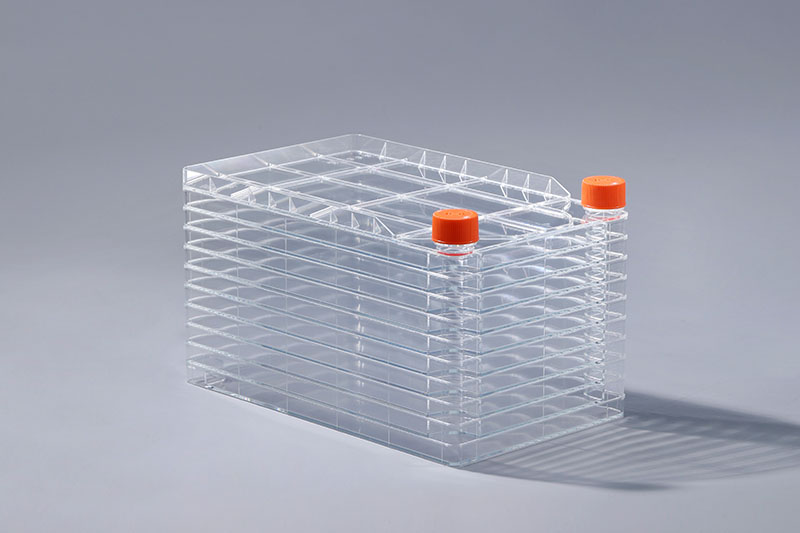представляет собой многослойную структуру расходных материалов для клеточных культур, преимуществами которой являются большая площадь культивирования, небольшое занимаемое пространство и низкий уровень загрязнения. Чтобы гарантировать качество продукта, требуются различные тесты, и тест на начальное заражение бактериями является одним из них. продукт, подлежащий стерилизации. Это тест на микробный предел, который относится к степени микробного загрязнения неуказанных стерилизованных продуктов и сырья, вспомогательных материалов и готовых продуктов до стерилизации, включая количество загрязнения и контрольных бактерий. , то есть обычный подсчет колоний, контроль кишечных и патогенных бактерий. Целью этого теста является предоставление эталонного индекса для следующей стерилизации клеточной фабрики, например, стерилизующей дозы, чтобы обеспечить эффект стерилизации. Можно сказать, что это тест для контроля эффективности процесса стерилизации.To Подводя итог, цель первоначального обнаружения загрязняющих бактерий на фабрике клеток состоит в том, чтобы подтвердить стерилизующую дозу, контролировать эффективность процесса стерилизации и, таким образом, обеспечить стерильность продукта.Для анализа бионагрузки было отобрано не менее 10 образцов из трех отдельных партий продукта для тестирования. Анализ бионагрузки должен выполняться валидированным и доступным методом. Рассчитывали среднюю бионагрузку каждой партии, и среднюю бионагрузку 30 образцов использовали как общую среднюю бионагрузку трех партий. Если средняя бионагрузка одной из трех партий в два или более раза превышает общую среднюю бионагрузку, для проверки дозы используется среднее значение партии, в противном случае для проверки дозы используется общее среднее значение трех партий.
Generally speaking, the initial contamination bacteria test is the estimated value of the bioburden of the product to be sterilized. It is a microbial limit test, which refers to the degree of microbial contamination of non-specified sterilized products and raw materials, auxiliary materials and finished products before sterilization, including the amount of contamination and control bacteria. , that is, the usual colony count, coliform and pathogenic bacteria inspection. The purpose of this test is to provide a reference index for the next sterilization of the cell factory, such as the sterilization dose, so as to ensure the sterilization effect. It can be said to be a test to monitor the effectiveness of the sterilization process.
For bioburden analysis, at least 10 samples were drawn from three separate batches of product for testing. Bioburden analysis must be performed according to a validated and available method. The average bioburden of each batch was calculated and the average bioburden of 30 samples was used as the total average bioburden of the three batches. If the average bioburden of one of the three batches is two or more times greater than the total average bioburden, the batch average is used for dose verification, otherwise, the overall average of the three batches is used for dose verification.
To sum up, the purpose of the initial contaminating bacteria detection in the cell factory is to confirm the sterilization dose, monitor the effectiveness of the sterilization process, and thus ensure the sterility of the product.
The FAI climbed 5.9 percent year-on-year in the first 11 months of 2018, quickening from the 5.7-percent growth in Jan-Oct, the National Bureau of Statistics (NBS) said Friday in an online statement.
The key indicator of investment, dubbed a major growth driver, hit the bottom in August and has since started to rebound steadily.
In the face of emerging economic challenges home and abroad, China has stepped up efforts to stabilize investment, in particular rolling out measures to motivate private investors and channel funds into infrastructure.
Friday's data showed private investment, accounting for more than 60 percent of the total FAI, expanded by a brisk 8.7 percent.
NBS spokesperson Mao Shengyong said funds into weak economic links registered rapid increases as investment in environmental protection and agriculture jumped 42 percent and 12.5 percent respectively, much faster than the average.
In breakdown, investment in high-tech and equipment manufacturing remained vigorous with 16.1-percent and 11.6-percent increases respectively in the first 11 months. Infrastructure investment gained 3.7 percent, staying flat. Investment in property development rose 9.7 percent, also unchanged.
 English
English



















































